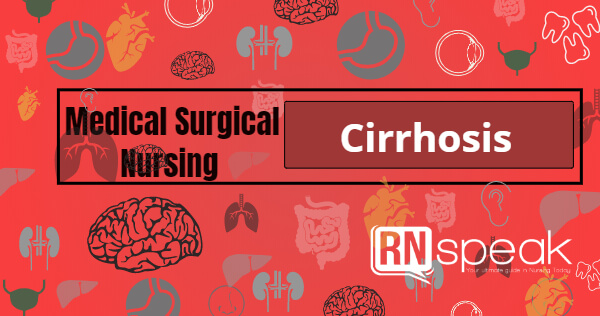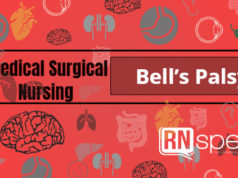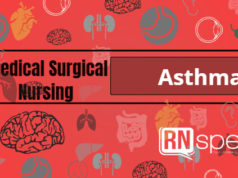Cirrhosis is a chronic disease characterized by replacement of healthy liver tissue with diffuse fibrosis that disrupts the structure and function of the liver. The fibrosis alters the liver structure and vasculature, impairing blood and lymph flow and resulting in hepatic insufficiency and hypertension in the portal vein. After years of liver inflammation, it will gradually lose its ability to function well, which can lead to serious problems in other parts of the body.
The three classifications of Cirrhosis
- Alcoholic Cirrhosis -scar tissue characteristically surrounds the portal areas. This is the most prevalent type that caused by a long history of chronic alcoholism
- Postnecrotic cirrhosis-consist broad bands of scar tissue and results from previous acute viral hepatitis or drug-induced massive hepatic necrosis.
- Biliary cirrhosis-consist of scarring of the liver around the bile ducts. This type of Cirrhosis usually results from chronic biliary obstruction and infection(cholangitis). It is much less common than the other two classifications of Cirrhosis.
Causes
The various causes of Cirrhosis are a combination of alcohol, hepatitis C, or both. People with Cirrhosis are typically not caused by trauma to the liver or other acute or short-term causes of damage. Usually, years of prolonged injury are required to cause the disease.
- Chronic alcoholism-The amount of alcohol intake is broken down acts as a toxin, leading to inflammation. With prolonged use, scar tissue develops, and the liver is unable to function properly.
- Viral or Autoimmune hepatitis-This disease appears to be caused by the immune system and inflammatory responses by attacking the liver and causing damage, and eventually scarring of the liver tissues.
- Inherited or Genetic disorder-Cystic fibrosis, alpha-1 antitrypsin deficiency, hemochromatosis, Wilson disease, galactosemia, and glycogen storage diseases are inherited diseases that interfere with how the liver produces, processes, and stores enzymes, proteins, metals, and other substances the body needs to function properly. Cirrhosis can result from these conditions.
- Bile ducts obstruction-The duct that carries the bile out of the liver is blocked, and bile backs up and damages liver tissue.
- Drugs and toxin-Prolonged exposure to drugs and environmental toxins can lead to hepatic cell damage.
Clinical Manifestations
Signs and symptoms of cirrhosis increase in severity as the disease progresses. Clinical manifestations are categorized as compensated and decompensated.
Compensated Cirrhosis means that the liver is heavily scarred but can still perform many important bodily functions. Many people with compensated cirrhosis experience few or no symptoms and can live for many years without serious complications.
| Compensated |
Decompensated |
|
|
Decompensated cirrhosis means that the liver is extensively scarred and unable to function correctly. People with decompensated cirrhosis eventually develop many symptoms and complications that can be life-threatening.
Diagnostic Test
- CT scan or Ultrasound– show shrinkage or abnormal appearance of the liver.
- Laboratory studies – bilirubin, albumin, alanine transaminase (ALT), aspartate transaminase (AST), prothrombin time, and serum ammonia- to check for elevated values, which indicate hepatic cell destruction.
- Laparoscopy and liver biopsy-direct visualization of the liver
- Paracentesis-to examine ascetic fluid for cell, protein, and bacterial counts.
- Esophagoscopy– to determine the presence of esophageal varices.
Medical Management
Pharmacological
- Potassium-sparing diuretic spironolactone (Aldactone)-used to decrease ascites and pleural effusion.
- Lactulose(Cholac)-used to eliminate the ammonia from the blood into the bowel. Tap water enemas may also be ordered to help the body eliminate ammonia.
- Propranolol hydrochloride(Inderal)- an antihypertensive medication may be ordered to lower portal hypertension.
Surgical
- Paracentesis– may perform to remove the fluid from the abdomen and relieve pressure on the diaphragm and lungs. A paracentesis is done by making a small incision and inserting a trochar into the abdomen to drain the fluid. Albumin may be infused at the same time to pull excess fluid back into the vascular system.
- Esophagogastric intubation (balloon placed into the esophagus and inflated to put pressure on bleeding sites) or endoscopic sclerotherapy (placing a flexible tube into the esophagus and using an agent that causes sclerosing of the bleeding area) for bleeding esophageal varices. If sclerotherapy is unsuccessful, endoscopic banding may be performed. This technique involves banding of the varices causing strangulation, and eventually fibrosis of the area.
Cirrhosis Nursing Management
- Monitor vital signs, intake and output, and electrolyte levels to determine fluid volume status.
- Maintain some periods of rest with legs elevated to mobilize edema and ascites—alternate rest periods with ambulation.
- To assess fluid retention, measure, and record abdominal girth every shift. Weigh the patient daily and document his weight.
- Administer diuretics, potassium, and protein or vitamin supplements as ordered. Restrict sodium and fluid intake as ordered.
- Observe and document for bleeding gums, ecchymoses, epistaxis, petechiae and degree of sclerae, and skin jaundice. Remain with the patient during the hemorrhagic episodes.
- Inspect stools for amount, color, and consistency. Test stools and vomitus for occult blood as ordered.
- Watch for signs of anxiety, epigastric fullness, restlessness, and weakness.
- Observe closely for signs of behavioral or personality changes. Report increasing stupor, lethargy, hallucinations, or neuromuscular dysfunction. Arouse the patient periodically to determine the level of consciousness. Watch for asterixis, a sign of developing encephalopathy.
- Allow the patient to express his feelings about having Cirrhosis. Offer psychological support and encouragement when appropriate.
Patient teaching
- To minimize the risk of bleeding, warn the patient against taking non-steroidal anti-inflammatory drugs, straining to defecate and blowing his nose, or sneezing too vigorously. Suggest using an electric razor and a soft toothbrush.
- Advise the patient that rest and good nutrition conserve energy and decrease metabolic demands on the liver. Urge him to eat frequent, small meals. Teach him to alternate periods of rest and activity to reduce oxygen demand and prevent fatigue.








